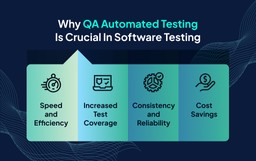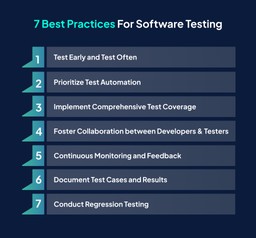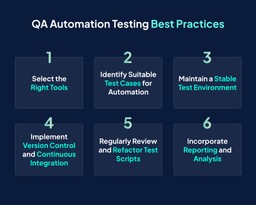Welcome to the thrilling world of Quality Assurance (QA) Automation Testing!
Imagine ensuring that software runs smoothly like a well-oiled machine. That’s our mission at Syntax Technologies.
Did you know that global spending on technology hit a whopping 4.7 trillion U.S. dollars in 2023?
And it’s expected to reach a staggering five trillion dollars worldwide by 2024!
With technology advancing rapidly, ensuring software works flawlessly is more critical than ever.
Here at Syntax Technologies, we’re all about helping you navigate the maze of software testing.
If you’re ready to jump into practical software testing, sign up for our QA Course and ensure your professional path in QA automated testing!
Now, we’ll share easy-to-follow tips and tricks to make your testing process smooth sailing.
Let’s dive in and change the way you approach software quality assurance!
Why QA Automated Testing is Crucial in Software Testing
Before delving into the importance of QA automated testing, let’s briefly touch on the three main testing strategies widely used in software development:
Static Testing
While static testing can uncover defects early in the development process, it relies heavily on human judgment and may overlook subtle coding errors or logic flaws that can only be detected through dynamic testing.
Dynamic Testing
Dynamic testing is essential for validating software functionality, but it can be time-consuming and resource-intensive, especially when executed manually. Additionally, dynamic testing may uncover only some potential defects, leading to gaps in test coverage.
Black Box Testing
Black box testing provides valuable insights from a user’s perspective but may fail to uncover defects related to internal code structures or system integrations. Without access to the underlying code, black box testers may struggle to pinpoint the root cause of issues.
Now, let’s explore why QA automated testing is crucial in software testing
Speed and Efficiency
Automated testing significantly accelerates the testing process by executing tests quickly and repeatedly.
In contrast to manual testing, which can be time-consuming and prone to human error, automated tests can be run overnight or during off-peak hours, allowing you to identify defects early and speed up the software development cycle.
Increased Test Coverage
With automated testing, you can achieve higher test coverage by executing a large number of test cases across different configurations and environments.
Automated tests can be reused and scaled to cover various scenarios, ensuring comprehensive validation of the software’s functionality and performance.
Consistency and Reliability
Automated tests give consistent and reliable results, reducing the variability risk introduced by manual testing.
By eliminating human error and subjectivity, automated tests deliver consistent outcomes, allowing you to assess the software’s quality and stability confidently.
Cost Savings
While initial setup and maintenance of automated testing frameworks require investment, the long-term benefits far outweigh the costs.
Automated testing greatly reduces the need for manual intervention, saving time and resources spent on repetitive testing tasks.
Additionally, automated tests can detect defects early in the development process, minimizing the cost of bug fixing and reworking later.
Automated QA testing plays a critical role in ensuring software quality, reliability, and efficiency.
You can accelerate testing, increase coverage, and improve the overall software development process by leveraging automation.
Top Issues Faced by Software Developers in Software Testing
In 2022, software developers’ most critical work challenges were unrealistic deadlines and inadequate or insufficient work tools.
Software development is no easy feat, and navigating through the testing phase comes with challenges.
Here are some of the top issues faced by software developers in software testing:
- Time Constraints: Unrealistic deadlines often pressure developers to deliver quality software within tight timelines. This rush can compromise the thoroughness of testing, leading to the release of potentially buggy or incomplete software.
- Tool Limitations: Inadequate or insufficient testing tools can hinder the effectiveness of software testing efforts. With the right tools, developers can automate tests, track bugs, or analyze test results effectively.
- Debugging Complexity: Identifying and fixing bugs can be time-consuming and challenging, especially when dealing with complex codebases or intricate software architectures. Debugging often requires extensive manual intervention and can delay the release of software updates.
- Test Maintenance: As software evolves and new features are added, maintaining and updating existing test suites can become cumbersome. Without proper test maintenance practices in place, outdated tests may produce unreliable results or fail to detect regressions effectively.
While these challenges may seem daunting, QA automated testing can be a game-changer in overcoming them. By automating repetitive testing tasks and providing instant feedback on code changes, automated testing empowers developers to tackle these issues head-on.
Imagine encountering a piece of code that’s not working as expected. With automated testing in place, developers can quickly run automated tests to pinpoint the problem and identify the root cause of the issue.
This instant feedback loop allows developers to iterate on their code more efficiently, reducing debugging time and streamlining the development process.
In conclusion, QA automated testing is not just a tool—it’s a lifeline for software developers facing software testing challenges.
7 Best Practices for Software Testing
When it comes to software testing, following best practices can make all the difference in ensuring the quality and reliability of your software.
Mastering the basic practices can transform your journey from a novice to an expert.
Let’s explore seven indispensable best practices that will set you on the path to becoming a proficient QA software tester:
Test Early and Test Often
Early detection of bugs reduces the effort required for bug fixing later on. For example, a QA tester may perform exploratory testing on new features as soon as they are developed to catch any issues before they are integrated into the codebase.
Embrace testing at every stage of development, from requirements gathering to deployment, to ensure issues are addressed proactively.
Prioritize Test Automation
Automate repetitive and time-consuming tests to streamline your testing process. A QA team uses Selenium WebDriver to automate regression tests for an e-commerce website.
These tests automatically verify critical functionalities such as user login, product search, and checkout process across different browsers, ensuring consistent performance across all supported platforms.
Implement Comprehensive Test Coverage
Define clear test cases and scenarios to cover all possible use cases and edge cases. For example, consider a software company developing a mobile banking application.
It creates test cases to cover various scenarios, including account login, fund transfers, bill payments, and security features. This comprehensive test suite ensures that all aspects of the application are thoroughly tested before release.
Foster Collaboration between Developers and Testers
During a sprint planning meeting, developers and testers collaborate to define acceptance criteria for user stories. By working together, they ensure that all team members clearly define and understand both functional and non-functional requirements.
Continuous Monitoring and Feedback
Gather real-time insights into your software’s performance and quality. Monitor key metrics and gather user feedback to make data-driven decisions and identify areas for improvement.
For instance, a DevOps team implements continuous integration and deployment pipelines for their web application. They use monitoring tools like Prometheus and Grafana to track key metrics such as response time, error rates, and server resource utilization, enabling them to detect and address real-time performance issues.
Document Test Cases and Results
Maintain transparency and accountability in the testing process by documenting test cases and results. A QA team can use TestRail to document test cases and record test execution results.
TestRail provides a centralized repository for test documentation, allowing team members to access and update test cases as needed. Test results are logged in TestRail, providing a historical record of testing activities and outcomes.
Conduct Regression Testing
After implementing new features in a software application, a QA team runs a suite of regression tests to ensure that existing functionalities remain unaffected. Automated regression tests are executed using a CI/CD pipeline, allowing the team to quickly identify and fix any regressions introduced by the latest code changes.
By incorporating these best practices into your software testing process, you’ll not only enhance the quality, reliability, and efficiency of your testing efforts but also pave the way for exceptional user experiences.
QA Automation Testing Best Practices
Besides regular software testing strategies, Quality Assurance (QA) automation testing is a cornerstone of efficiency, enabling organizations to streamline their testing processes, increase test coverage, and deliver high-quality software at scale.
Here are some best practices to maximize the effectiveness of QA automation testing:
- Select the Right Tools
Choosing the right automation testing tools is crucial for the success of your QA automation efforts. Consider factors such as compatibility with your technology stack, ease of use, robustness of features, and support for integration with other tools and frameworks.
Example: A software development team working on a web application will implement Selenium WebDriver for their automation testing needs. Selenium WebDriver offers robust features for automating web browser interactions and is compatible with multiple programming languages and browsers.
The team can effectively automate their web application testing by selecting Selenium and achieving cross-browser compatibility across different platforms.
- Identify Suitable Test Cases for Automation
Not all test cases are suitable candidates for automation. Focus on automating repetitive, time-consuming, and high-impact test cases that can be executed efficiently using automation tools. Use criteria such as test frequency, complexity, and stability to prioritize test cases for automation.
Example: A mobile app development team decides to automate test cases for user authentication, payment processing, and navigation workflows using Appium.
These test cases are frequently executed, cover critical functionalities, and involve complex interactions across multiple screens.
By automating these test cases with Appium, the team can ensure consistent validation of core app features across various mobile devices and operating systems.
- Maintain a Stable Test Environment
Maintaining a stable and consistent test environment is essential for reliable automation testing. Ensure that your test environment mirrors the production environment as closely as possible in terms of hardware, software configurations, and dependencies.
Example: A software development team sets up a Docker-based test environment to replicate production configurations for their microservices architecture. They use Docker containers to encapsulate application dependencies, databases, and external services, ensuring consistency and reproducibility across development, testing, and production environments.
By leveraging Docker, the team can easily spin up and tear down test environments on-demand, enabling faster and more reliable automation testing.
- Implement Version Control and Continuous Integration
Version control and continuous integration (CI) are indispensable practices for managing automation test scripts and integrating them seamlessly into the development workflow.
Use a version control system such as Git to store and manage automation test scripts, allowing multiple team members to collaborate on test development and track changes effectively.
Example: A QA automation team integrates their automation test scripts with a Git-based version control system and a Jenkins-based continuous integration pipeline. Whenever developers commit code changes to the repository, Jenkins triggers automated test execution, including unit tests, integration tests, and end-to-end tests. Test results are reported back to the development team, allowing them to identify and address defects early in the development cycle.
- Regularly Review and Refactor Test Scripts
Regularly review and refactor automation test scripts to maintain their relevance, efficiency, and maintainability.
Example: A QA automation team conducts regular code reviews and refactoring sessions to maintain the quality and efficiency of their automation test scripts. During a review session, team members identify redundant test cases and optimize existing test scripts for better performance and readability.
They refactor common functionalities into reusable functions and libraries, promoting code reusability and reducing duplication across test suites.
- Incorporate Reporting and Analysis
Reporting and analysis are essential components of effective automation testing. They provide insights into test execution results, trends, and quality metrics.
Example: A QA automation team utilizes reporting and analysis tools like TestNG and Allure to generate comprehensive test reports and visualize test results.
TestNG generates detailed HTML reports with information on test execution status, assertions, and error messages, while Allure provides interactive dashboards with graphs and charts to visualize test trends and metrics.
By analyzing these reports, the team identifies areas for improvement and iteratively enhances their automation testing strategy.
Start Your Journey to QA Automation Mastery with Syntax Technologies
The world of QA automation testing is a realm of endless possibilities where innovation and precision converge to shape the future of software development.
At Syntax Technologies, we believe that every aspiring QA software tester holds the power to make a difference.
Imagine a world where every line of code is meticulously scrutinized, every bug is swiftly squashed, and every software release is a triumph of quality and reliability.
That world is within your reach, and we’re here to guide you on your journey towards it.
So, dare to dream big, dare to challenge the status quo, and dare to be the change you wish to see in the software testing industry.
With Syntax Technologies by your side, the possibilities are limitless, and the future is yours to shape.




